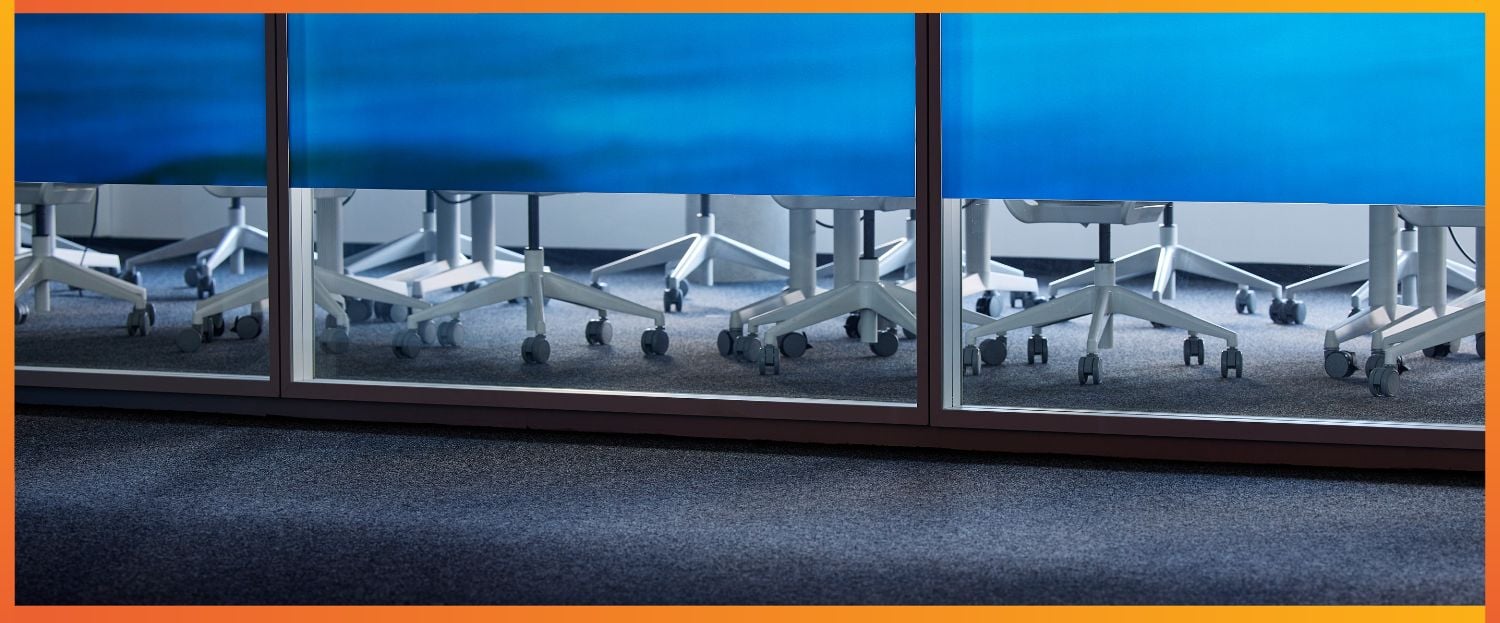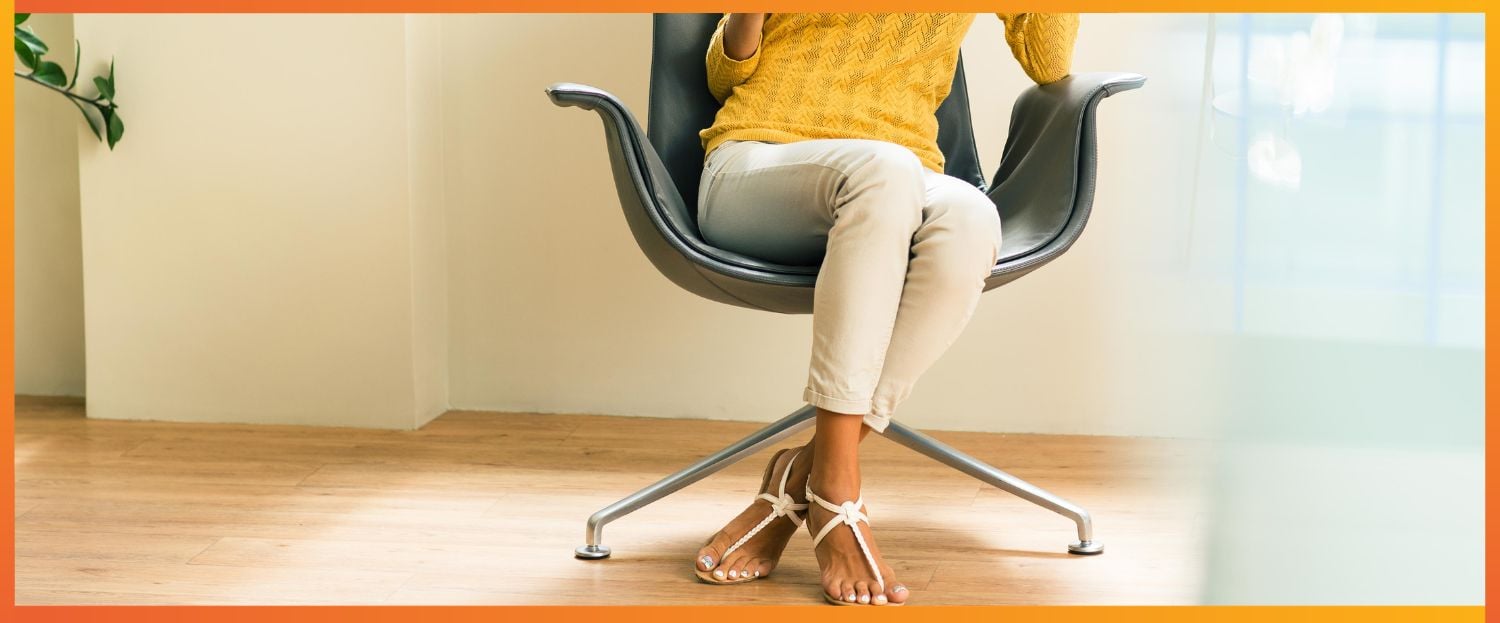Castors vs Gliders on Office Chairs: Which is Best?
When selecting furniture for an office, the choice between chairs with castors versus those with gliders is often a practical concern. A castor is a wheeled mechanism affixed to the base of an office chair, allowing for easy movement across floors. Typically, castors are favoured in dynamic environments where mobility and flexibility are key for the user to roll from one area to another without standing. In contrast, gliders, also known as bell glides, replace the wheels with stationary feet. These are often used in settings where stability is prioritised over movement, to deter the chair from rolling, for example, in a stationary workstation or a conference room.
The difference between castors and gliders goes beyond their basic functionality. Castors can come in various designs, including single and twin-wheel configurations, and may be manufactured from different materials to suit various floor types. They also feature different braking systems, such as lockable or pressure-sensitive brakes, which provide control over the chair's movement. On the other hand, gliders are usually flat or slightly rounded at the bottom, promoting a firm positioning on the ground which can be helpful to avoid unintentional sliding, especially on slick surfaces.
Choosing between castors and gliders for an office chair depends not only on individual preferences but also on the specific requirements of the work environment. Factors such as floor surface, the need for mobility, and ergonomic considerations play significant roles in deciding which option would be more beneficial. As such, understanding the distinct characteristics of each can significantly enhance the comfort and productivity of a workspace.

Understanding Castors and Gliders
Office chairs are commonly equipped with either castors or gliders, both designed for varying floor types and mobility needs. Castors allow for rolling movement, while gliders provide stable support without mobility.
Types of Castors
Castors come in various shapes, sizes, and materials, offering different levels of mobility and floor protection.
- Free-wheeling castors: These allow a chair to move smoothly in any direction without resistance.
- Braked castors: These have a mechanism that locks the wheel, preventing movement when engaged.
- Interval-braked castors: These lock automatically when not in use.
- Charge-braked castors: These lock when a certain weight is applied. The castor is free-wheeling until weight is applied, whereupon the castor locks and acts as a glide.
- Nylon castors: They are durable and work well on carpeted flooring but can cause damage to softer floors.
- Polyurethane castors: These are softer and less likely to cause floor damage, suitable for a variety of surfaces.
- Hooded castors: These feature a cover over the wheel, often enhancing aesthetic appeal and preventing debris from clogging the wheel mechanism.
The choice of caster depends on factors like the flooring type and the need for controlled movement or ease of mobility.
Types of Glides
Gliders, in contrast, are static and meant to keep furniture firmly in place without the ability to roll.
- Felt glides: Best for wooden or tiled floors, providing a soft barrier that minimises scratches and noise.
- Plastic glides: Versatile and cost-effective, suitable for many types of flooring but may wear out quicker than other materials.
- Metal glides: Strong and durable, ideal for heavy furniture but can be damaging to soft flooring without proper padding.
Glides are typically chosen for their protective qualities and stability they offer to office furniture, particularly in environments where chair movement isn't necessary.
The Role of Materials and Design
In the production of office chairs, the selection of materials and the intricacies of design are crucial in determining comfort, ergonomics, and style. Both castors and gliders play significant roles in the stability and safety of the chair, influenced heavily by these factors.

Material Choices for Castors and Gliders
- Metal: Employed for its strength and stability, metals such as stainless steel are commonly used in castor frames for enhanced durability.
- Plastic: A lighter option, plastic often serves as the body of castors, balancing ease of movement with sufficient support.
- Felt: Added to the bottom of gliders, felt material helps to protect flooring and reduce noise, offering a gentle alternative to harder materials.
The material used in the base design, whether for a castor or glider, must accommodate the chair legs, mount, and foot, ensuring a secure and stationary experience or a smooth swivel feature, as preferred.
Design Considerations for Office Chairs
- Ergonomics: Chairs with adjustable arms, seat height, and a swivel mechanism contribute to the ergonomics, promoting user comfort and productivity.
- Style: Personal preference plays a major role, with some opting for classic black designs while others may choose bolder styles to match office décor.
- Comfort: A well-designed base and appropriate choice between castors and gliders are essential for maintaining comfort during prolonged use.
- Safety: The stability of an office chair is paramount, requiring a carefully considered design to prevent tipping or accidents.
Each element contributes to the overall function and appeal of the chair, with thoughtful design ensuring a harmonious balance between practicality and personal preference.
Installation, Maintenance, and Replacement
When considering office chair mobility options, it's crucial to understand how castors and gliders are installed, maintained, and when they may need to be replaced. These factors can significantly influence the convenience and longevity of the products.
Easy Installation and Maintenance
Castors, typically featuring a wheel and an attachment mechanism, generally install with either a push-fit stem or threaded stem system. The push-fit stem simply clicks into the chair base, while the threaded stem screws in. Adhering to manufacturer instructions prevents damages like scratches or dents to floors or the castors themselves.
Gliders, on the other hand, are often designed with a nail-on or stick-on attachment. Installation usually entails pushing the nail-on gliders into the base of the chair or adhering stick-on variants directly to clean surfaces. They require less force to install compared to castors and tend to have minimal maintenance needs.
For both options, routine checks should be conducted to ensure a secure fit and cleanliness is maintained to avoid build-up of debris, which could affect mobility and induce extra wear.
When to Replace Gliders and Castors
They should be replaced when they no longer provide stable and effortless movement. Indicators for replacement include noticeable wear on wheels, difficulty in manoeuvring the chair, or visible damage such as cracks.
- Caster Wheels: Often require replacement due to worn treads or faulty bearings. Regular inspection can prevent unexpected failure and prolong longevity.
- Gliders: Should be replaced if they begin leaving marks or scratches, which indicates they have degraded.
In both cases, replacement parts are easily replaceable and can be purchased from most office furniture shops. For optimal durability and performance, selecting quality products is recommended and using manufacturer-approved replacements ensures compatibility and maintains the chair's warranty.
Choosing Between Castors and Gliders
When selecting between castors and gliders for office chairs, it’s important to consider factors such as floor type, chair usage, and desired mobility.
Factors Affecting Choice
Floor Surface: The choice between castors and gliders often begins with the floor surface. For example, anti-slip gliders are suited to hard floors to prevent scratches, while castors typically offer resistance-free motion on carpeted floors.
- Hardwood Flooring: Gliders are recommended to protect against scratches.
- Carpets: Castors allow for easier movement on carpeted areas.
Comfort and Mobility: Castors provide ease of movement, facilitating dynamic activities such as meetings and allowing the user to move freely. Conversely, gliders are suitable for environments where chairs need to remain stationary, such as conference seating.
Weight and Load Capacity: Heavy-duty castors are designed for chairs with higher weight capacities, while gliders are a common choice for lightweight chairs or lounge-style seating.
When to Choose Gliders Over Castors
Debate and Personal Preference: There may be a debate in preference for the tactile stability offered by gliders versus the flexibility of castors. It comes down to personal preference and specific needs.
- Stability: Choose gliders when stability is a priority, particularly for heavy-duty use or when maintaining a fixed position is key.
- Floor Protection: Gliders are preferable for floor protection, as they minimise the potential for damage on delicate hard flooring.
Usage Scenarios:
- Conference Rooms: Opt for gliders to avoid shifting during meetings.
- Office Tasks: Consider castors for tasks that require moving around the workspace.
Can I Add Gliders To My Office Chair?
While many of our office chairs come equipped with chair castors as standard, we understand that different work environments and preferences may call for alternative solutions. That's why we offer a large selection of office chairs that can be customised with glides upon request. Glides, unlike castors, provide a stable, non-rolling base for your chair, making them ideal for settings where movement is less desired or where floor protection is a priority.
If you're interested in opting for glides instead of castors for your office chair, we recommend getting in touch with our friendly sales team. By giving us a call at 01234 834693, you'll receive personalised assistance in selecting the best office chair tailored to your specific needs. Our team will guide you through the process, ensuring that you find a chair that not only meets your comfort and ergonomic requirements but also comes equipped with the right type of base.
Remember, choosing the right components for your office chair, be it castors or glides, is essential for both comfort and functionality.





